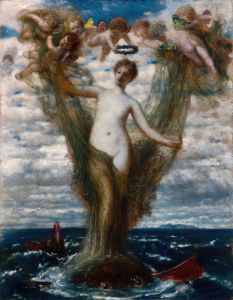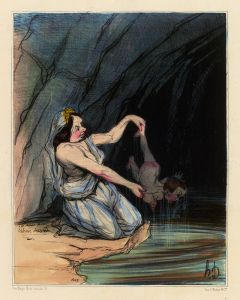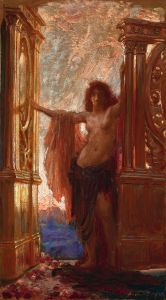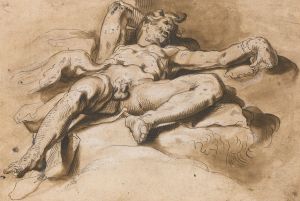
Ariadne
A hand-painted replica of Herbert James Draper’s masterpiece Ariadne, meticulously crafted by professional artists to capture the true essence of the original. Each piece is created with museum-quality canvas and rare mineral pigments, carefully painted by experienced artists with delicate brushstrokes and rich, layered colors to perfectly recreate the texture of the original artwork. Unlike machine-printed reproductions, this hand-painted version brings the painting to life, infused with the artist’s emotions and skill in every stroke. Whether for personal collection or home decoration, it instantly elevates the artistic atmosphere of any space.
Herbert James Draper was a prominent English painter of the late 19th and early 20th centuries, known for his classical subjects and mythological themes. One of his notable works is "Ariadne," which reflects his fascination with ancient mythology and his skill in rendering the human form with dramatic effect.
"Ariadne" was painted in 1905, during a period when Draper was at the height of his artistic career. The painting depicts the figure of Ariadne, a character from Greek mythology. Ariadne was the daughter of King Minos of Crete and is best known for her role in the myth of Theseus and the Minotaur. According to the myth, Ariadne fell in love with Theseus and helped him navigate the Labyrinth to defeat the Minotaur by providing him with a ball of thread to trace his path back.
In Draper's portrayal, Ariadne is shown in a moment of solitude and contemplation. The painting captures her in a reclining position, exuding a sense of grace and melancholy. Draper's use of light and shadow, along with his attention to detail, highlights Ariadne's delicate features and the flowing drapery of her attire. The background of the painting is often characterized by a serene landscape, which complements the tranquil yet poignant mood of the scene.
Draper's "Ariadne" is exemplary of his ability to blend classical themes with a romantic sensibility. His work often drew inspiration from the Pre-Raphaelite movement, which emphasized vivid colors, attention to detail, and an idealized portrayal of its subjects. Draper's technique in "Ariadne" showcases his mastery of the human anatomy and his ability to convey emotion through composition and color.
The painting was well-received during Draper's lifetime and contributed to his reputation as a leading figure in the British art scene. Draper's works, including "Ariadne," were exhibited in prestigious venues such as the Royal Academy of Arts in London, where they garnered critical acclaim for their beauty and technical proficiency.
Today, "Ariadne" is appreciated not only for its aesthetic qualities but also for its representation of early 20th-century interpretations of classical mythology. Draper's work remains a subject of study for art historians and enthusiasts who are interested in the intersection of mythological themes and visual art during this period.
Herbert James Draper's legacy as an artist is marked by his ability to bring mythological stories to life through his paintings. "Ariadne" stands as a testament to his skill and his enduring fascination with the myths of ancient Greece, capturing the timeless allure of these stories through his artistic vision.


















